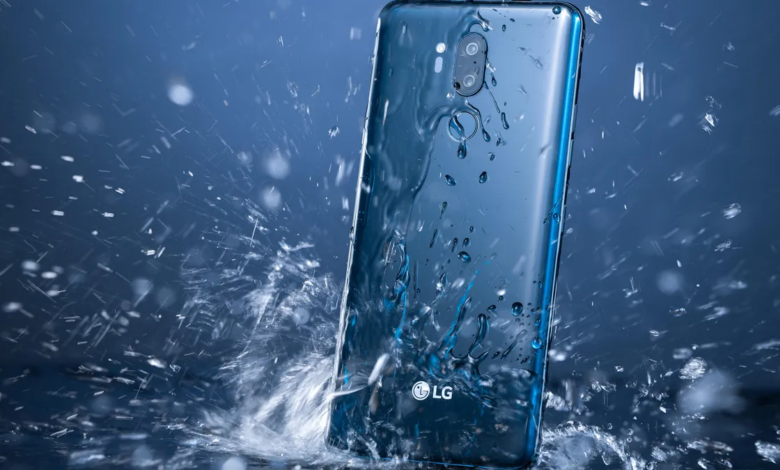Is My Phone Waterproof? IP68, IPX8 Ratings Explained

What do IP67, IP68, and IPX8 actually mean? And can you swim with your phone? What you need to know is as follows.
Historically, tough, rubber-sealed rugged phones made for construction workers or downhill mountain bikers were the only ones with water resistance. But times have changed, and in 2023 most popular phones—including the iPhone 14 Pro, Samsung S23 Ultra, and Google’s Pixel 7 Pro—will have some type of water resistance built in.
Anybody who has ever accidentally spilled tea, coffee, or soda on their phone understands the benefits of water resistance in a phone. It could mean the difference between a cheap trip to the shop and a fast wipe with a serviette.
Certain phones shouldn’t be used near liquid at all, and not all phones can resist being submerged in water. At a pool, hardly any phones should be brought, and swimming in the sea is not recommended. Recent phone shopping likely exposed you to terminology like “water resistant” and the increasingly popular IP67, IP68, or IPX8 classifications. So, what do those rankings actually imply, and more importantly, how waterproof is your pricey new phone?
Let’s dissect the terminology to find out.
What do IP67, IP68 and IPX8 mean?
The International Electrotechnical Commission has established a standard known as IP, or ingress protection ratings, often known as international protection ratings. The organization claims that the codes serve as a “standard for classifying the degrees of protection given by the enclosures of electrical equipment.”
The level of protection offered against the introduction of foreign solid objects, such as dust or fingers, is indicated by the first number in the rating code. These degrees of protection vary from zero to six.
The second number indicates the level of defense against liquid or moisture infiltration, with levels of defense ranging from 0 to 8.
On occasion, an IP rating will appear with an X in place of a number, for example, IPX8. An X is substituted for the rating number in this case since the company hasn’t provided information about the testing. An IPX8-rated item can withstand being immersed in water, but it hasn’t received a rating for any dust protection.
With an IP68 rating, the iPhone 14 Pro is resistant to water infiltration and dust entering its inside. Also IP68-rated is the Galaxy S22 Ultra. These are therefore both water-resistant, correct? Okay, no. The confusion arises at that point.
The IEC mandates that a device can resist being submerged in water for 30 minutes at a depth of at least 1 metre in order to receive an IP rating of 8. The maker is in charge after that. Although the iPhone 14 Pro, according to Apple, is safe in up to 6 meters of water for up to 30 minutes, the S23 Ultra can be immersed for up to 30 minutes in up to 1.5 meters of water. Hence, even though every phone with an IP68 rating will have had to meet the minimal requirement of 1 metre for 30 minutes, it’s crucial to read the small print and understand exactly what your phone delivers.
Charts describing the various degrees of protection are available at the conclusion of this article for more information on all of the IP classifications.
Can I go swimming with my iPhone?
Although the iPhone 14 Pro’s 6 meters of claimed water resistance could make it seem like you can tuck one inside your swimsuit and hit the pool, you’d be better off keeping it out of the water. The IP rating is assessed under controlled circumstances, in still water. Moving your phone in the water will increase the water pressure, increasing the chance that water will get inside and cause permanent harm.
Since most swimming pools contain extra chemicals like chlorine, the IP tests are also conducted in fresh water, which may affect your phone’s resilience. Moreover, you should never put your phone in the water: Salty water could lead to numerous
It’s best practice to treat the feature as a backup in case of emergency even if your phone has the highest IP68 resistance grade. Don’t try to use the camera on your phone to take images of starfish or anything else while snorkeling because it is not built to do so. You shouldn’t attempt to record TikTok videos of oneself diving into the deep end from the high dive either. It is available in case of mishaps like a spilled drink or emergencies like having to make a phone call in the pouring rain.
My phone doesn’t have an IP rating. Can it get wet?
A manufacturer must have rigorously tested their product to guarantee it satisfies the requirements before it can even claim that it has an IP rating. It is reasonable that some businesses just don’t want to spend the money on these tests because they can be time-consuming and expensive, especially when it comes to budget-focused models.
Without an official IP certification, several phones—including Motorola’s Moto G50—use phrases like “water-repellent” or “water-resistant.” To keep moisture at bay, these handsets may use techniques like rubberized sealing or water-repellent nano coating. Although these phones might withstand an accidental splash, it’s best to avoid submerging them completely. Therefore, you shouldn’t have to stress too much about answering calls while it’s raining.
It is prudent to assume that your phone is not water resistant if it makes no mention of it, and you should use the greatest amount of caution while near liquids.
Solid protection
| IP Code | Protection | Object size |
|---|---|---|
| 0 | No protection. | N/A |
| 1 | Protection from contact with any large surface of the body, such as the back of a hand. But no protection against deliberate contact with a body part, such as a finger. | Less than 50mm |
| 2 | Protection from fingers or similar objects. | Less than 12.5mm |
| 3 | Protection from tools, thick wires or similar objects. | Less than 2.5mm |
| 4 | Protection from most wires, screws or similar objects. | Less than 1mm |
| 5 | Partial protection from contact with harmful dust. | N/A |
| 6 | Protection from contact with harmful dust. | N/A |
Moisture protection
| IP Code | Protection | Test duration | Usage |
|---|---|---|---|
| 0 | No protection. | N/A | N/A |
| 1 | Protection against vertically dripping water. | 10 mins | Light rain |
| 2 | Protection against vertically dripping water when device is tilted at an angle up to 15 degrees. | 10 mins | Light rain |
| 3 | Protection against direct sprays of water when device is tilted at an angle up to 60 degrees. | 5 mins | Rain and spraying |
| 4 | Protection from sprays and splashing of water in all directions. | 5 mins | Rain, spraying and splashing |
| 5 | Protection from low-pressure water projected from a nozzle with a 6.3mm diameter opening in any direction. | 3 mins from a distance of 3 meters | Rain, splashing and direct contact with most kitchen and bathroom faucets |
| 6 | Protection from water projected in powerful jets from a nozzle with a 12.5mm diameter opening in any direction. | 3 mins from a distance of 3 meters | Rain, splashing, direct contact with kitchen and bathroom faucets, outdoor use in rough sea conditions |
| 7 | Protected from immersion in water with a depth of up to 1 meter (or 3.3 feet) for up to 30 mins. | 30 mins | Rain, splashing and accidental submersion |
| 8 | Protected from immersion in water with a depth of more than 1 meter (manufacturer must specify exact depth). | At least 30 mins | Rain, splashing and accidental submersion |







